Crossover SUVs are like M&Ms in a bowl. Lots of different colors, but they’re all pretty much the same.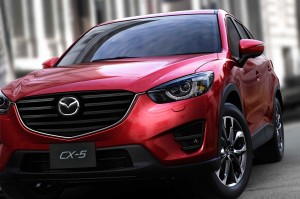
With a few exceptions.
There is this Mazda CX-5, for instance.
It is one of the almost-nil vehicles of this type that you can still buy with a manual transmission. The other major players – models like the Honda CR-V, the Toyota RAV4, the Ford Escape and the Hyundai Sante Fe Sport – are automatic only.
The Mazda also gives you a choice of engines.
Most of the rest come with just one – take it or leave it.
It’s also one of the easiest on gas models in this class – even with its optional (and higher-powered-than-most) engine.
Lowest MSRP, too – and not by a couple hundred bucks, either.
Try a thousand-plus bucks. A couple thousand bucks, in some cases (shame on you, Hyundai Sante Fe).
WHAT IT IS
The CX-5 is Mazda’s offering in the compact crossover SUV class. It has two rows, seats five and is generally similar in layout and concept to rivals like the Honda CR-V, Toyota RAV4, Ford Escape and Hyundai Sante Fe Sport.
Like them, it’s available with either FWD or (optionally) AWD. Unlike almost all of them (one of the few exceptions being the Jeep Compass) it’s available with a manual transmission.
And unlike most of them, you can get a CX-5 with your choice of engines, too.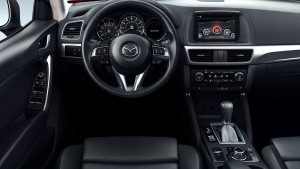
Base price is $21,795 for a FWD Sport with a six-speed manual transmission and 2.0 liter engine. An AWD-equipped Sport with the larger 2.5 liter engine and six-speed automatic lists for $24,445.
The most expensive version of the CX-5 is the Grand Touring with AWD (and the 2.5 liter engine/six-speed automatic).
It lists for $29,470.
A Honda CR-V starts at $23,445 with FWD and CVT automatic and tops out at $31,645 with the same drivetrain plus AWD.
The Toyota RAV4’s base price is $23,680 ($1,885 higher than the CX-5’s) topping out at $29,850.
The Hyundai Sante Fe Sport (which is comparably sporty) starts at $24,950 ($3,155 higher than the base CX-5) and tops out (stratospherically) at $37,350.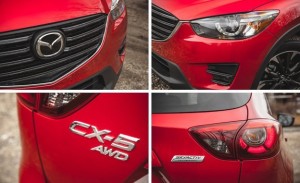
One of the few entrants in this class that starts out lower – and can also be had with a manual transmission – is the Jeep Compass. Base price (with five-speed manual) is $18,995 ($2,800 less than the CX-5) topping out at $26,290 for a High Altitude trim with what Jeep styles “4WD” – but it’s really AWD, like the others in this class.
WHAT’S NEW FOR 2016
All trims get standard bluetooth wireless and an upgraded audio-infotainment system; adaptive cruise control (adjusts/maintains following distance automatically) is now available, as are lane departure warning and a rear cross traffic alert system.
WHAT’S GOOD
Most puppy-like of the bunch; it wants to play!
More drivetrain choices than rivals.
Exceptional gas mileage – even with the optional (high-powered) engine.
Costs less than most rivals.
WHAT’S NOT SO GOOD
Six-speed manual restricted to base 2.0 engine, which isn’t available with AWD.
Audio-infotainment interface looks cool but isn’t as easy to use as other systems.
Most of the crossovers in this class give you the choice of FWD or AWD – but not which engine (or transmission) will drive those wheels.
The Honda CR-V, for instance, comes only with a 2.4 liter four (185 hp) paired only with a CVT automatic. The Toyota RAV4 comes only with a 2.5 liter four (176 hp) paired only with a six-speed automatic.
But the CX-5 comes with either a 2.0 liter four (155 hp) or a 2.5 liter four (184 hp) and either a six-speed manual or a six-speed automatic.
The manual is restricted to the 2.0 engine (models with the 2.5 engine come with the six-speed automatic) but having the choice is nice – and not solely because (for some people at least) a manual-equipped vehicle is more fun to drive.
It is also cheaper to drive.
The CX-5 2.0’s base price is significantly lower than the base prices of almost all of its rivals – and not by a small amount.
Now add in 26 city, 35 highway – the CX-5 2.0’s EPA rated fuel efficiency. 
And compare it with the $1,885 more to start RAV4’s 23 city, 31 highway. Or the $1,650 more to start CRV-V’s 27 city, 34 highway.
It’s true the RAV4 and CR-V’s standard engines are larger – and stronger. But it’s not a huge difference in either hp (25-30 hp) or acceleration. The 2.0 equipped CX-5 gets to 60 in about 9.2 seconds, dead heat with the RAV4 and only slightly less quick than the 2.5-equipped/FWD CR-V (8.7 seconds). Both the RAV4 and the CR-V are several hundred pounds heavier than the CX-5, which explains the close race, despite the on-paper power advantage the Toyota and the Honda seem to have.
The catch is that you can’t get AWD with the 2.0 engine – or the automatic transmission (if you want that).
Even so, the CX-5 with its optional 2.5 liter engine and the six-speed automatic still costs hundreds less than the RAV4 and the CR-V and it is much quicker than either of them: Zero to 60 in 7.7 seconds for the FWD version and about eight flat with the optional AWD.
And the 2.5-equipped CX’s mileage (26 city, 33 with FWD; 24 city, 30 highway with AWD) is still very good – better, in fact than the RAV4’s and nearly as good as the economical but slow-pokey CR-V. 
You might also want to take a look at the Jeep Compass – which is less expensive and offers a manual as well as two available engines and a more rugged AWD system (with a “crawl” mode for off-road). But it’s a much less sporty – and much more thirsty (20/23 with the optional engine and “4WD”) ride.
The Ford Escape is another “possible.” It’s sporty – and it offers more than one engine. However, if you want AWD, you haver to buy the SE trim, which lists for $27,400 (with AWD). That’s a $4,205 difference in price – which makes a direct comparison unfair.
To the Ford.
It’s a similar situation with the Hyundai Sante Fe Sport. With AWD, the prize zoom zooms (couldn’t help that) to $26,700 – $3,505 more than the MSRP of the AWD-equipped CX-5.
To be fair to both the Escape and the Sante Fe Sport, they are both available with powerful turbocharged engines that give them quickest-in-class acceleration. But, as you’d expect, you pay to play.
An “Ecoboosted” Escape with FWD stickers for $27,250; $29,000 with AWD. The Sante FE Sport turbo starts at $31,250 – with FWD.
With AWD, the sticker price rockets to $33,000.
Apples – oranges.
The CX’s max tow capacity is 2,000 pounds – vs. 1,500 lbs. for the RAV4, CR-V and Escape.
The Sante Fe Sport and Jeep Compass can pull up to 2,000 lbs. when properly equipped.
Most of the crossovers in this segment are excellent appliances. Ideal for carrying the kids around, picking stuff up, going on trips – dealing with snow days.
The CX-5 is ideal for all of those things – plus other things.
Like high-speed cornering. Drifting on gravel roads with steep drop-offs. Rabbit punching through heavy traffic.
The Honda CR-V and the RAV4 (much less the Compass) are not meant for such. They haven’t got the speed and they haven’t got the reflexes. The CR-V’s CVT transmission, for example, is designed for maximizing fuel efficiency. It does not do rev-matched downshifts or throttle blips. You also get 16 inch steel wheels – vs. the 17 inch alloys that are standard equipment with the CX-5 (you can go all the way up to nineteens).
The RAV has decent power, but it’s heavy and soft, like a 38-year-old ball player in his last year in the majors – vs. the 23-year-old just tapped from AA. It leans (and squeals) much sooner. The Traction control can’t be turned off unless you stop first – and comes back on whether you’ve asked it to or not. 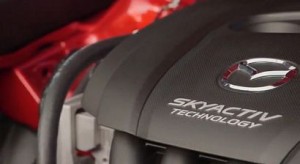
The Mazda’s throttle tip-in (how quickly the engine reacts to your right foot’s inputs) is exceptionally sharp. As is the steering. As are the shifts (in Sport mode). The high compression (13.0:1) Sky-D 2.5 liter engine is also much more responsive than the mere hp numbers indicate. A 13.0:1 CR was once the exclusive feature of race cars fed race gas. Mazda engineers made a street engine with 13.0:1 compression that runs on regular unleaded gas, too.
The Ford Escape’s (and Hyundai Sante Fe Sport’s) turbocharged engines demand premium.
AT THE CURB
The crossover SUV concept to a great extend preordains the general shape – and so, looks – of these things. Tall, hatchbacky wagony. But the CX-5 gets some aesthetic character from handsome car cousins like the Mazda6 sedan. The front clip is very similar to the 6’s: low long and curvy. It’s enough to add character – and brand identity – to a vehicle in a class of vehicles that are often very hard to tell apart from 50 yards out.
Inside’s perky, too. A Miata-esque gauge cluster and available real carbon fiber trim nicely offset by the judicious use of real chromed metal switches (as for the six-speed automatic’s Sport mode) instead of black – and plastic – ones.
Lots of times – most of the time – the most fun vehicle in a group is the least practical vehicle in the group. Gimped in some way. Cramped back seats, for instance. Or a too-small trunk.
As with the drivetrain, though, there are no such prices to pay in terms of the CX’s interior space, general usability and everyday livability.
It actually has a roomier back seat than the RAV4 and the CR-V (39.3 inches for the Mazda vs. 38.2 inches for the Honda and 37.2 inches for the Toyota… and 36.8 for the Ford). The Sante Fe Sport has slightly more second row legroom (39.4 inches) but that’s a difference without much distinction.
Cargo-wise, the CX has about the same capacity as the Escape (34.1 cubes behind the second; 64.8 total vs. 34.3 and 67.8 for the Ford and slightly less than the CR-V (35.2 and 70.9) and RAV4 (38.4 and 73.4) and the Sante Fe Sport (35.4 and 71.5).
The Compass comes in last with just 22.7 cubic feet of space behind its second and 62.7 cubes with the second row folded.
THE REST
The LCD touchscreen is good-sized (seven inches, among the largest in this class) and looks high-tech but is less easy to use than some of the systems in rivals like the RAV4 and CR-V. The Mazda unit sometimes requires more steps to access a given function – or accessing the function is just less user-friendly. There’s a rotating and pushbutton mouse on the center console to engage some of the functions and others (like the stereo channel selection inputs) are controlled via the touchscreen.
It takes some getting used to.
Mazda offers some neat factory/dealer accessories such as a ski/snowboard carrier, a surfboard carrier and the option to buy a portable Garmin navigation system that’s not tied to this particular car (and much less expensive to update or just replace than traditional built-in GPS systems).
Adaptive cruise control and an automatic braking system that stops the car if you don’t in an emergency – such as a car stopped suddenly in front of you that you don’t notice in time – can be ordered optionally, too.
THE BOTTOM LINE
It’s all about what you want.
Because as athletic as the CX-5 is, it’s also as everyday-friendly as the others. The ride is not stiff – and the gas mileage still good. You sacrifice nothing to enjoy the bigger personality, the readiness to make tracks.
For less money than the competition.
Let’s not forget the CX’s available manual transmission, either.
Six more ways to have fun in this thing (the Jeep Compass – the only other one in this class that offers a stick- only has five – and is vice president of the Slow Movers Club; 10.2 seconds to 60 MPH).
Maybe the best thing about the CX-5, though, is that no one suspects. Not your insurance mafiosi – not The Man.
Hey, it’s just another crossover SUV… .
If you value independent media, please support independent media. We depend on you to keep the wheels turning!
Our donate button is here.
If you prefer to avoid PayPal, our mailing address is:
EPautos
721 Hummingbird Lane SE
Copper Hill, VA 24079
PS: EPautos stickers are free to those who sign up for a $5 or more monthly recurring donation to support EPautos, or for a one-time donation of $10 or more. (Please be sure to tell us you want a sticker – and also, provide an address, so we know where to mail the thing!)


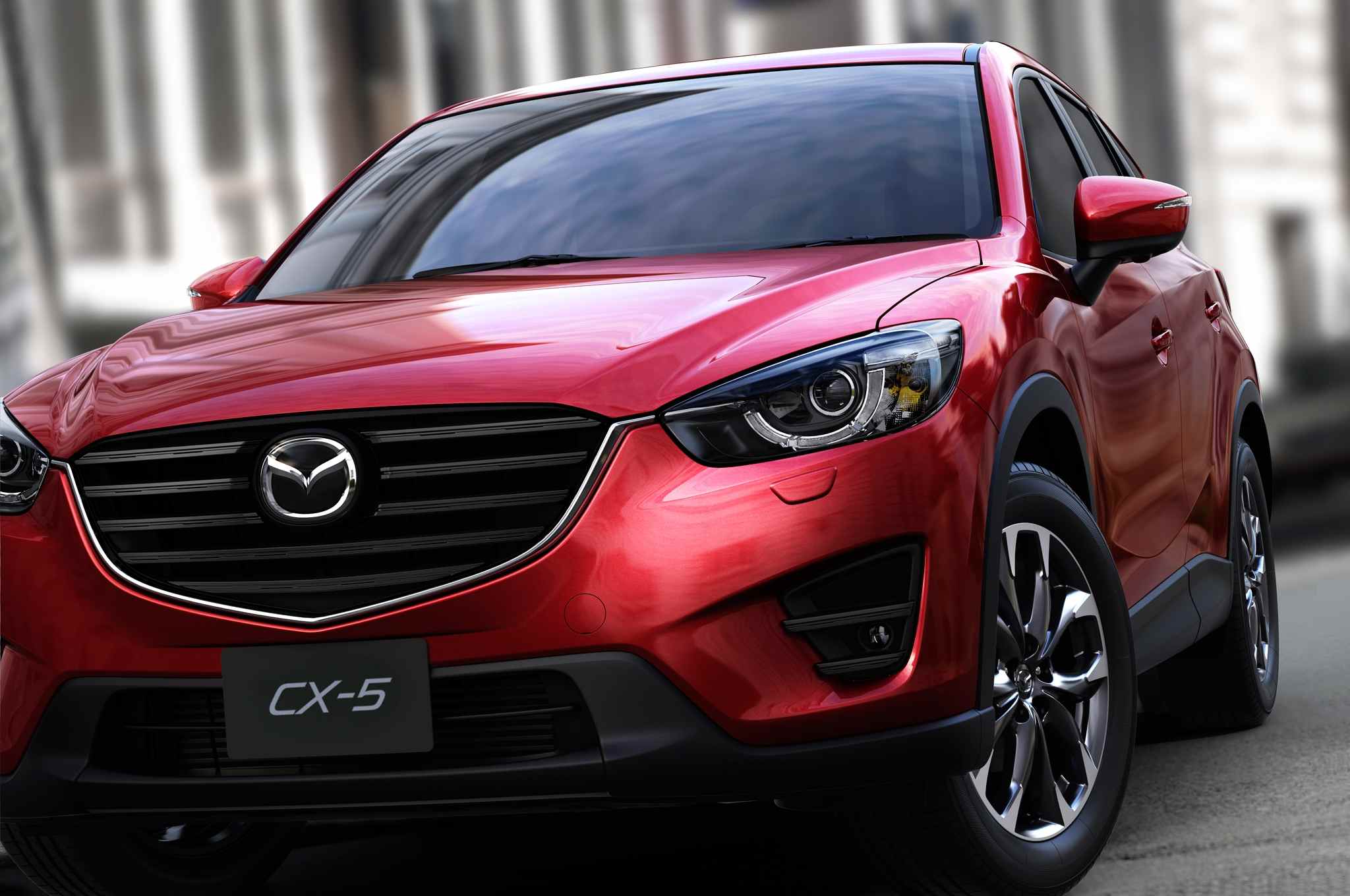


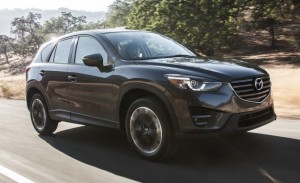









The slowest cars I find on the road are BMWs. Pass them allot while I am going the speed limit.
I’m usually the fastest car from a stop. And I drive a late 90s olds. From that point, the 0-60 times are worthless. Only as fast as the slowest piece of shit in front of you.
Eightsouthman,
I like your idea. “For the last year I decided to try and pick out the fastest driving vehicles.”
Just for fun, I’m going to post my list. Based upon where I do most of my driving, which is the Phoenix Region freeways. They’re generally modern, at least 6-8 lanes wide, and remarkably uncrowded outside of rush hours.
V-6 Honda Accords, especially the coupes.
V-6 Hyundai and Kias. My theory is that such fine engines have never been availble to these people who can’t afford to buy above the relatively bottom feeder Korean price range. They are somewhat drunk with their new found power, and far more anxious to engage in displays of speed than the drivers of comparably fast BMWs, Audis, Acuras and even Accords. We usually look down on them, and refrain from engaging, because they have less judgement and experience participating in low profile cut and thrust runs through lower speed traffic.
V-6 Camrys would seem to qualify for subtle speed runner status. I see a few. But the majority of even V-6 Camry drivers are afflicted by a stodgy mind set.
Mini-vans and Suburbans usually donning Utah plates are the fastest in my area. ISP loves to pick them out. They love the out of state revenue from mormon soccer mommy headed up to their vacation cabin.
Mike, that’s what I mean by “fastest driven” . In my part of the world it’s pickups and SUV’s. The last time I saw somebody driving really fast, as in another 30 or 40 mph above the 80 I was doing was a big Merc, the 550 maybe or whatever it is. He was flying low, Christmas day with plenty of radar out.
That is rare though. Of course most cars and no pickups I know of will not do that sort of speed without illegally modifying them.
Chevy makes a law enforcement pickup, even in 3/4 T 4WD. I’ve been looking for one of those simply because the speed limiter is well above stock and it’s been illegal for years to alter that speed limiter.
What are the most important reasons for your manual transmission preference?
Inexpensive, durable, efficient, and it makes driving fun. Manual shifting keeps you constantly aware that an automobile is a big machine that must be manipulated through a multidimensional environment rather than a mobile infotainment salon with cup holders.
Hi Ramrod,
Mostly, I enjoy being more actively involved. Also, a manual gives you, the driver, more control over the vehicle.
In addition, manuals are – generally – simpler and so, less expensive. Replacing a clutch, for instance, is typically a job that costs a few hundred bucks whereas most modern automatics, if they need to be rebuilt or replaced, will typically cost you $1,500-$3,000 or more.
eric, your first figure for an auto is a definite lowball and you’re probably thinking of the auto in your TA. $3000 is more the lowball figure these days with some nearly getting into the 5 figure range(and some probably well are into that range).
You know transmissions are idiotically expensive when you can buy a reman Fuller 10 speed for a big rig cheaper than a new car tranny.
I agree about manuals being more fun, but for me, only if I had a huge amount of power I can use to a greater extent due to a manual. I can also see using a manual if it gives you more power, something that’s rapidly disappearing.
And then there are cars and light trucks that seem much better with auto’s and many light trucks, mainly diesels that don’t offer manual transmissions now.
Unless you have a 2011 Kia. Then the clutch will cost $600 for parts only. Then when the transmission goes out–it will–it’s $800-$1000 for decent used one. People will say driver error. But the exact same drivers drive a 2006 Scion with 240,000 miles–one new clutch–compared with the Kia 130,000 miles, 2 new clutches and one tranny.
Korean cars are sub-par. They cost more than the $2,000-$4,000 in initial savings over their Japanese and American counterparts.
That said, this Mazda seems like a neat car. I’m not surprised Mazda keeps the manual and is the sportster of the bunch. It’s kind of Mazda’s thing. If the wife ever wants a cross over–hopefully not–Mazda is where I’d look.
Yep, it’s a nifty CUV. But more than a few buyers perceive Mazdas to be a little less reliable, durable and valuable in the resale market than Toyotas or Hondas. Still, it’s obvious virtues may make it a success.
Originally, Mazdas were unique and prized for their Rotary engines.I know Rotaries may never return to the market. Still, if a Mazda doesn’t have a Rotary, there’s no other virtue compelling enough to ever make me buy one.
I like Mazdas okay, but I don’t see how this is any different from a normal CUV. It’s interesting how the RAV 4, the Ford Escape, and this thing look almost alike. The Honda CRV looks slightly different, but I wouldn’t buy one. Tire noise is atrocious from Hondas. It’s as if they forgot to insulate around the wheel wells or they put a mic inside the car to amplify tire noise.
swamprat, my feelings exactly. Back when Civics first became popular several friends who had jobs that required a lot of road work used them for their gas savings. I don’t think any amount of gas could have made me put 300K on one of them since they only got louder with time and miles.
If the only way to get good fuel mileage is to delete sound deadening, I’ll pay the premium to not have to listen to all that noise.
One of these guys had gone through several cars and a ’73 Grand Am was his favorite even if it couldn’t get high mileage. He drove it into the ground. He later had a CVT Civic that could get over 50mpg and it was a toss up if he or the car would live the longest.
Back in about ’07 he got a company car(their demands constantly changed, company car vs private car….and nobody wanted a company car. It was a Corolla he absolutely hated. I made a run with him and it was slow slow and loud loud and just crude. It didn’t last long either.
The company then issued another edict allowing private cars and being in his late 50’s he bought a Q ship. He loved that car and drove it into the ground also. He wanted to fix everything and keep driving it but Nissan parts are uber expensive so it made no sense monetarily to do that. Another guy traded his last Honda station wagon Accord(buzzy sumbitch it was)for a used(fleet car, looked like new)Lexus he still drives, uses Amsoil in and can tell you exactly what it costs to drive and that includes from the day he bought it and changed it to Amsoil. I first turned him on to Amsoil and with the mileage he drives, he couldn’t be happier using it since it helps keep costs down.
I used to have Mazda’s pass me a lot but these days I do most of the passing. It seems there is a different customer now and not very competent for the most part.
For the last year I decided to try and pick out the fastest driving vehicles. I’d publish my list but everyone would howl and correctly point out these weren’t the fastest vehicles on the road…..and that’s not what I’m speaking of. I’m simply referring to how vehicles are driven and of what brand and type they are.
Let me guess Eight.
All of your preferences are GM….? Would we howl, or just call your b.s.? Some of us on here have and/or still do own or work on fleets of cars.
Your buddy with the Corolla may have hated it, but was he comparing it with a Cavalier or Cobalt? Or a larger Malibu or Impala? I’ve seen many people do that. If that was the case, look past the grandma styling of the old Avalon’s. A Camry or Avalon beat out mid size and large American sedans in most meaningful ways. Sure the GM cars are superior in a few ways. But when you have several cars, fuel efficiency, longevity, cost of maintainence, and even road noise–when comparing same class cars–goes to Toyota/Lexus.
That’s coming from a guy who used to be a GM guy. I was right up to the day that I owned and took care of fleets. Now, the only thing that could get me back to GM is if Korea was their only competition.
ancap, you caught me. Chevettes seem to blow everybody off the road with Lumina’s and Cavaliers next in line.
So I’m guessing you wouldn’t care to drive a big Dodge pickup and I don’t even have to ask about GM’s. Those seem to tie for fastest driven in my country. Tahoe/Yukon seem to be next. There are many BMW’s out here and rarely are the drivers not hauling ass, mostly with detectors in windshield. If there were more Mercedes I’d put them in the top of the list although the low priced ones seem to be slow poke rural cars while the more expensive are blowing everybody away for the most part but they’re not that common.
Half ton Ford pickups are sometimes driven fairly fast but that’s relatively recently. I’ve noticed the last two-three year model Super Duty’s have speedos that are off on the slow side. I come up on them constantly doing 72-73 while I’m at 75. Several Dodges, a couple Chevy pickups and a few big rigs I often drive show the same thing. If there’s a conga line on a two lane SD’s are commonly at the front.
I used to see a lot of Mitsu’s and Mazda’s driven fast but that has fallen off, possibly due to sales and little crossovers people don’t drive fast.
More and more I see Tundras and some Nissan pickups being driven fairly fast, outpacing most of the traffic.
No doubt if there were as many different other vehicles driven in these parts the values would change.
I’m not equating any of this to the strength, relative value or anything else of the brand or style. About the only thing I can think of would be the quietness of the GM and Dodge pickups. I think a lot of these vehicles are so powerful and quiet it’s hard not to speed.
Probably the reason it’s pickups that are fastest is people who drive them are simply in a hurry and busy making a living with them.
I find it ironic that pickups are the slowest things out there with low speed limiters but the fastest driven. Of course it’s rare to see anyone driving anything at more than 90-95.
It’s a shame Mazda can’t import diesel engines. What a nice combo that would make, diesel with a manual tranny. Fun to drive and exceptionally efficient.
VW appears to be having technical (EPA) difficulties with delivering their 2016 TDIs beyond the ports.